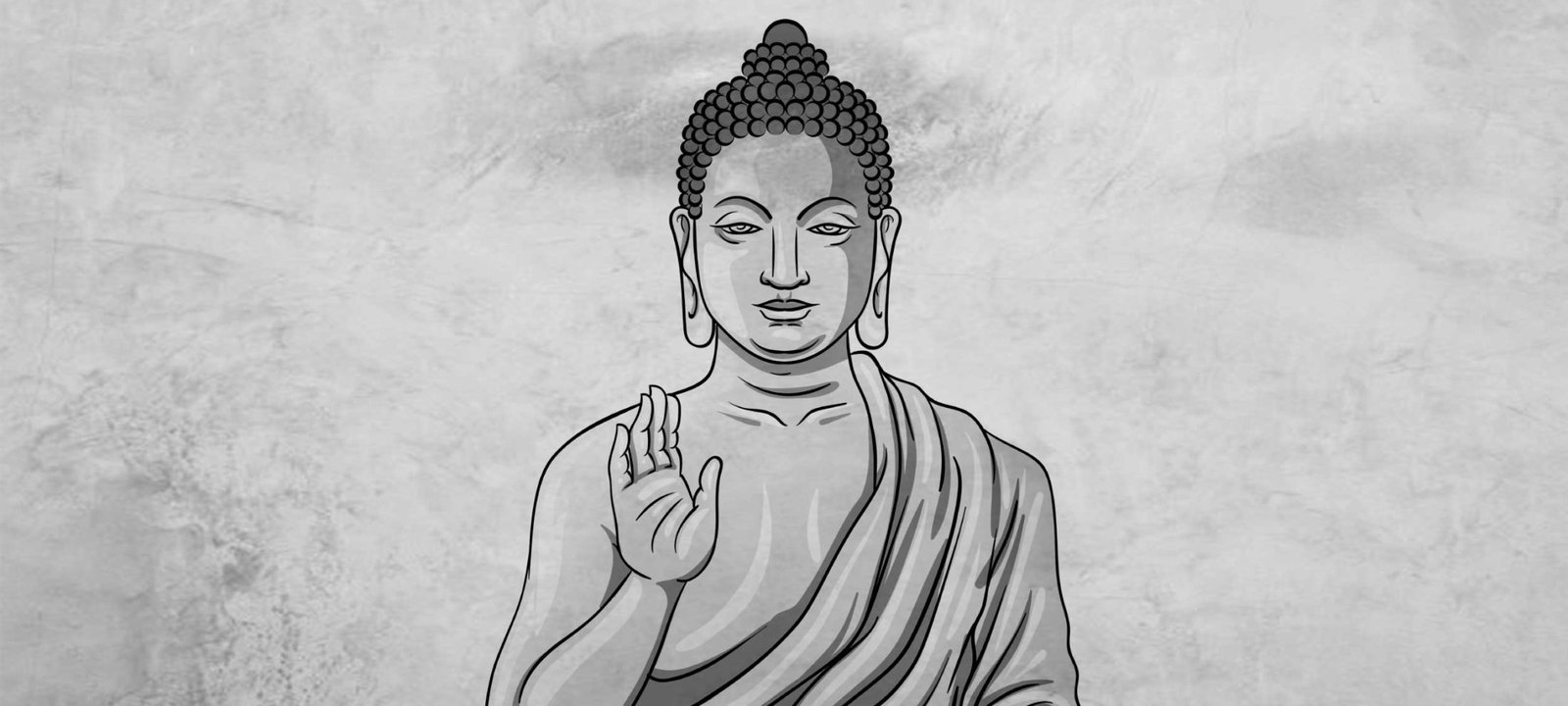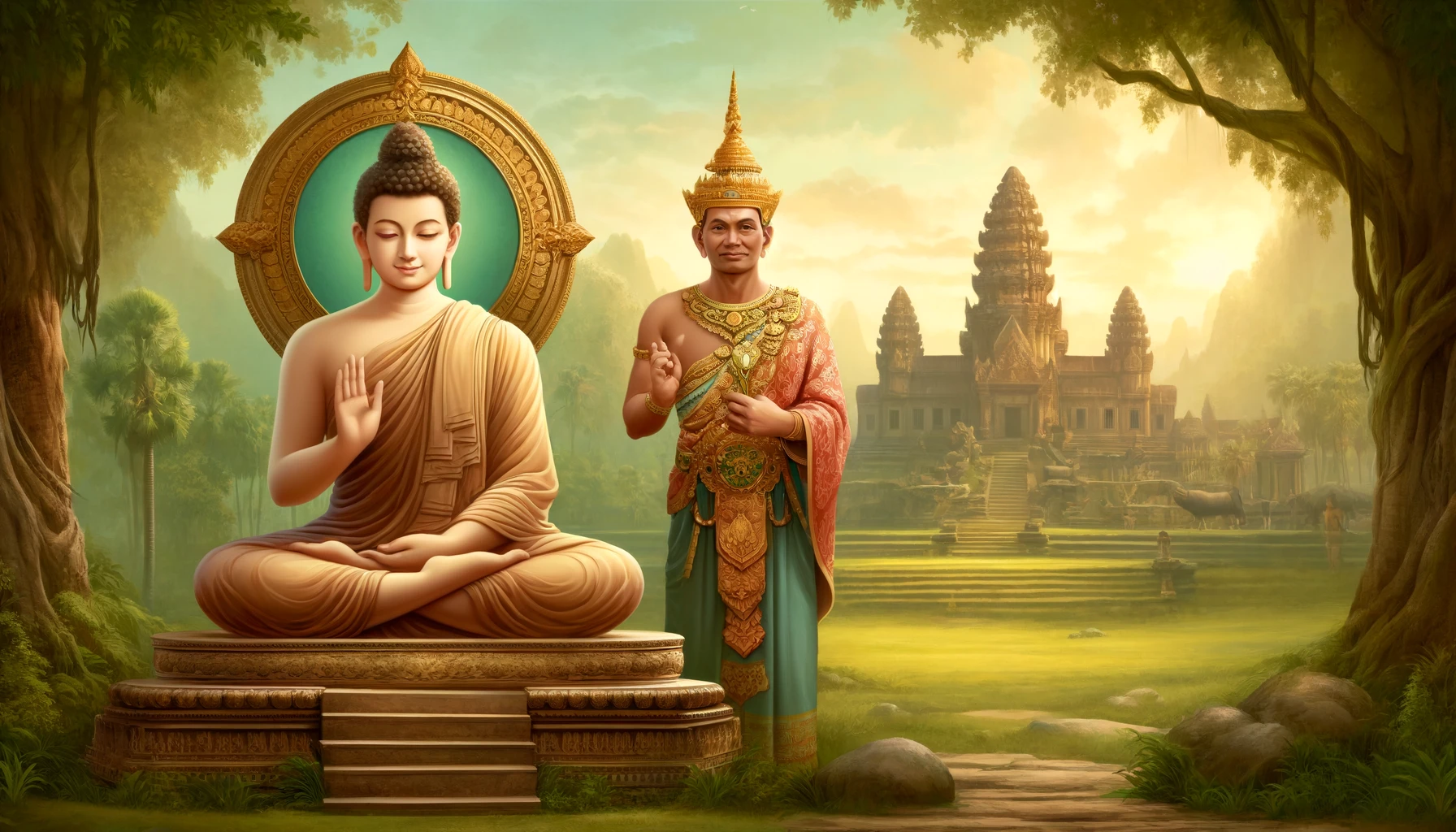The Story of the Burning House, found in the Lotus Sutra, is one of the most poignant and illustrative stories in Buddhist teachings. This allegory encapsulates the concept of upaya, or skillful means, which Buddha uses to guide sentient beings toward enlightenment. In this story, a wealthy man uses expedient means, in the form of white lies, to save his children from a burning building. Through this narrative, Buddha elucidates the compassionate and strategic ways in which he imparts his teachings to humanity, tailored to their varying capacities and understanding.
The Story
In the tale, Gautama Buddha addresses his disciple Shariputra with the account of a wealthy man whose house is old, decaying, and on fire. Inside the house, his children are unaware of the danger and continue to play, oblivious to the impending disaster. The father, desperate to save his children, contemplates how to lure them out. He knows they are too engrossed in their games to heed his warnings about the fire. So, he tells them about wonderful toys—goat-carts, deer-carts, and ox-carts—outside the house. Excited by the promise of these playthings, the children rush out to safety. Once they are out, the father presents them with a large, jeweled carriage drawn by a pure white ox, a gift far exceeding the initial promise.
When Buddha asks Shariputra if the father was guilty of falsehood, Shariputra responds negatively. The father’s lie was a compassionate act to save his children, thus not a falsehood in essence but an act of ultimate truth and care.
The Symbolism and Teachings
The Burning House
The burning house symbolizes the threefold world—the world of desire, form, and formlessness—in which humans are entangled. This world is inherently filled with suffering and impermanence, much like a decaying and burning house. The children represent sentient beings who are unaware of the existential peril and continue to engage in worldly pleasures and distractions.
The Father and His Sons
The father in the allegory represents the Tathāgata, or Buddha, who embodies compassion and wisdom. His sons symbolize the humans, who are lost in the illusions and attachments of the world. The father’s dilemma and his eventual strategy to lure his children out highlight the Buddha’s compassionate approach to saving sentient beings.
The Three Carts and the One Great Carriage
The three carts—goat, deer, and ox—are symbolic of the three vehicles (yana) in Buddhism:
- Sravakayana (Hearer’s Vehicle): For those who seek personal enlightenment by listening to Buddha’s teachings.
- Pratyekabuddhayana (Solitary Conqueror’s Vehicle): For those who achieve enlightenment through solitary meditation.
- Mahayana (Great Vehicle): For those who seek enlightenment for the benefit of all sentient beings.
The large jeweled carriage represents the One Buddha Vehicle, or the ultimate truth and enlightenment that Buddha offers to all beings. Initially, Buddha teaches different paths suited to the varying capacities of individuals. However, the ultimate goal is to lead all beings to the highest form of enlightenment, which is the essence of Mahayana Buddhism.
The Power of Expedient Means (Upaya)
The allegory illustrates the concept of upaya, which refers to the skillful and compassionate methods used by Buddha to teach and guide beings towards enlightenment. These methods are not deceitful but are strategic and considerate adaptations to the diverse needs and abilities of individuals. Just as the father used enticing playthings to save his children, Buddha uses different teachings and practices to attract and guide beings towards the ultimate truth.
A Reflection of Compassionate Wisdom
The Story of the Burning House is a profound reflection on the compassionate wisdom of Buddha’s teachings. It says the importance of upaya, the adaptable and skillful means employed by Buddha to reach out to all beings. Through this allegory, Buddha reveals that while the teachings may appear different and varied, they all lead towards the One Buddha Vehicle—the path to ultimate enlightenment and liberation. In essence, it is a reflection of the boundless compassion and ingenuity of Buddha in his mission to save all sentient beings from the suffering of the burning house of the threefold world.








